‘Very strange’: New theories emerge on South Korean plane crash
Experts have revealed the “almost criminal error” that caused the high number of fatalities in South Korea’s horrific Jeju Air crash landing.
News
Don't miss out on the headlines from News. Followed categories will be added to My News.
Experts now say the concrete wall at the end of a runway was an ‘almost criminal’ error that led to the deaths of 179 people in a plane crash in South Korea.
The Jeju Air plane skidded off the runway in the town of Muan, 288kms south of Seoul, slammed into a concrete barrier and erupted into a fireball on Sunday after its landing gear apparently failed to deploy.
Out of 181 people aboard, 179 were killed in South Korea’s worst aviation disaster, officials said.
Crash investigatorsand aviation experts have given their theories on the baffling crash, which South Korean officials are blaming on a “bird strike” that somehow crippled the plane’s landing gear on approach to Muan International Airport.
Here’s what we know about the emergence of crucial factors.
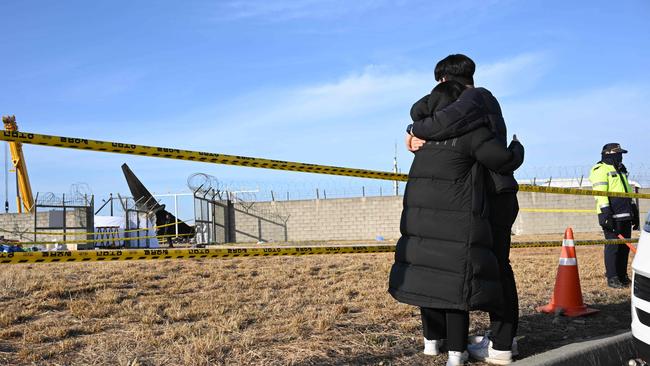
WHAT WAS THE CONCRETE BARRIER DOING THERE?
Air safety expert David Learmount told Sky News that having a concrete wall at the end of the runway was ‘verging on criminal’ and said the collision with the wall was the ‘defining moment’ of the disaster.
He suggested that had the wall not been there, the plane would have gone through a fence, slid over a road and probably come to a stop in a nearby field.
“I think everybody would have been alive… the pilots might have suffered some damage going through the security fence or something like that. But I even suspect they might have survived,” Mr Learmount said.

Airline News editor Geoffrey Thomas noted the lack of emergency ground staff on the tarmac. “Why weren’t they in attendance when the plane touched down? And why did the aircraft touch down so far down the runway? And why was there a brick wall at the end of the runway?”
South Korea’s deputy transport minister Joo Jong-wan has dismissed concerns about having the concrete wall after the end of the runway, saying that both ends of the runway have “safety zones with green buffer areas before reaching the outer wall”, according to The Independent.
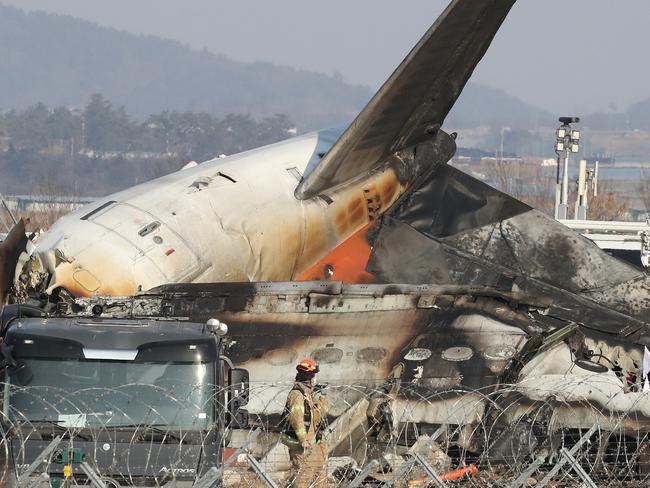
WHY EXPERTS ARE CONFUSED
Julian Bray, an aviation expert and major incident consultant, told The Sun the crash was “confusing”.
He said: “We need to put together the process second-by-second, find out which controls were working - which failed and only then can you come to a proper conclusion.”
The expert added he questioned how much control the pilot had of the plane - as despite hitting the ground with no landing gear at a rapid speed the pilot managed keep the plane “level”.
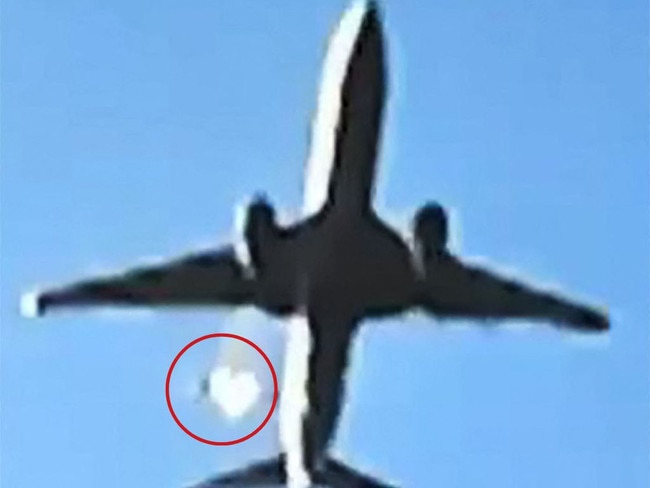
Gregory Alegi, an aviation expert and former teacher at Italy’s Air Force Academy, said: “At this point there are a lot more questions than we have answers.
“Why was the plane going so fast? Why were the flaps not open? Why was the landing gear not down?”
Christian Beckert, a flight safety expert and Lufthansa pilot, said the video footage suggested that aside from the reversers, most of the plane’s braking systems were not activated, creating a “big problem” and a fast landing.
“It’s really, really very rare and very unusual not to lower the gear, because there are independent systems where we can lower the gear with an alternate system,” he said.
HOW DID THE TRAGEDY UNFOLD?
A Boeing 737-800 aircraft belonging to low-cost carrier Jeju Air, flying from Bangkok to Muan airport, was warned of a bird strike by the control tower, officials said, during its first attempt at landing shortly on Sunday morning.
Minutes later, with the pilot issuing a “mayday” warning, it tried to land again, with video showing it attempting a “belly landing” without its landing gear activated.
Dramatic video shows the plane skidding along the runway with smoke trailing out, until it hits a wall at the end and bursts into flames.
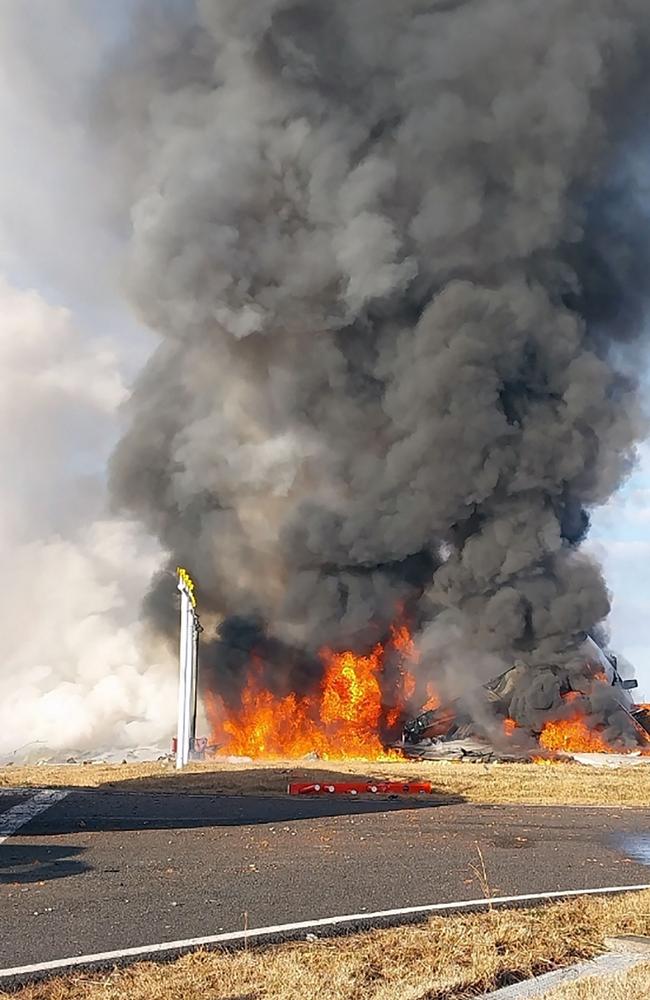
HOW MANY DIED?
There were a total of 175 passengers and six crew members on-board. Rescue workers plucked two survivors — both flight attendants — from the wreckage.
Authorities confirmed 179 people are dead and there are only the two surviving crew members from the tail of the plane.
“Passengers were ejected from the aircraft after it collided with the wall, leaving little chance of survival,” a local fire official told families at a briefing, according to a statement released by the fire brigade
WHAT TYPE OF PLANE WAS IT?
The Boeing 737-800 jet, operated by Jeju Air, was manufactured in 2009, the transport ministry said and had no history of accidents or malfunction.
WHAT WAS THE FLIGHT PATH?
The plane was flying from Bangkok, Thailand to South Korea’s Muan county, about 288 kilometres southwest of the capital Seoul.

WHAT DID THE PASSENGER’S TEXT SAY?
One heart-wrenching screenshot of the final text message exchange between a passenger and their family has been widely reported in local media.
The message from the parent and passenger reads: “Wait, a bird is stuck in the wing. Unable to land now … Should I leave a will?” It was the last message, sent at 9:01am.
WHAT HAPPENED TO THE LANDING GEAR?
Video of the plane’s approach show the aircraft hitting a bird, before it circled the runway and attempted a second landing.
Experts believe that at this point the aircraft had suffered hydraulic failure, which could have prevented the landing gear from deploying.
Some experts dispute that a bird strike disabled the landing gear.
Australian airline safety expert Geoffrey Dell said: “I’ve never seen a bird strike prevent the landing gear from being extended.”
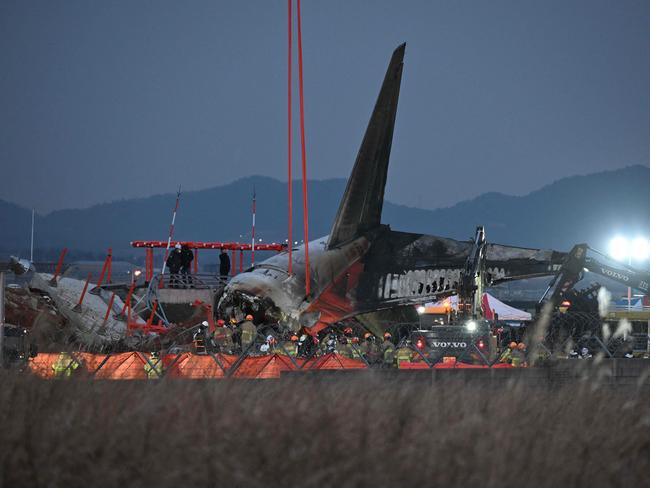
WHY WAS THE PLANE TRAVELLING SO FAST?
After abandoning a first landing attempt due to a loss of power, the pilots attempted to land on the runway at high speed without extending the flaps and deploying speed brakes that would normally slow the plane down.
The thrust reverser, used to slow down the aircraft once on the ground, was only deployed on one engine.
But while the flaps are powered by the hydraulic system, which failed, they can be extended manually in an emergency.
Captain Denys Davydov, who flies a Boeing 737-800 for Ukraine International Airlines, told the Times: “It seems they had hydraulics to deploy the one reverser but no flaps or landing gear… As a pilot of the same plane, it’s very strange.”
CAN A BIRD STRIKE BE FATAL?
A bird strike can be hazardous to aircraft safety and jets are especially vulnerable to loss of power if birds are sucked into the air intakes, according to the UN agency International Civil Aviation Organisation (ICAO).
If birds were sucked into the plane’s engines, the damage may have caused a system failure and inability to deploy the landing gear, forcing the plane to belly land on the runway.
A number of fatal accidents have occurred globally due to bird strikes.
In 2009, a US Airways Airbus A320 famously landed in New York’s Hudson River after a bird strike on both of its engines, in an incident widely known as the “Miracle on the Hudson” because there was no loss of life.
WAS THE LENGTH OF RUNWAY A FACTOR?
When asked if the accident happened due to the runway being too short, one official said this was likely not a factor.
“The runway is 2,800 metres long, and similar-sized aircraft have been operating on it without issues,” they said.
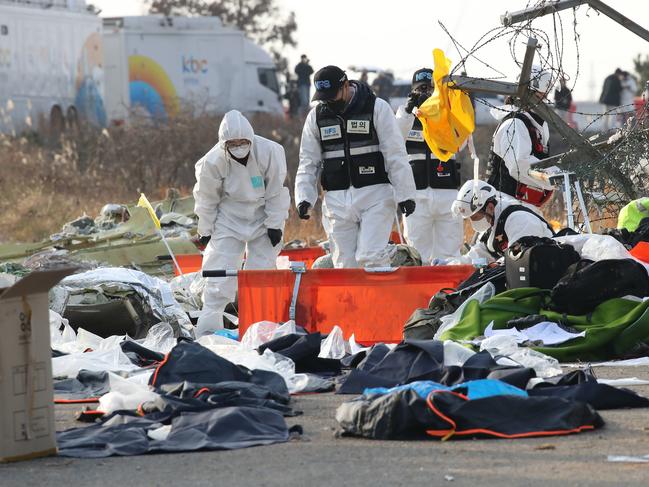
WAS THE BLACK BOX RECOVERED?
Senior Transport Ministry official Joo Jong-wan said workers have retrieved the flight data and cockpit voice recorders of the plane’s black box, which will be examined by government investigators.
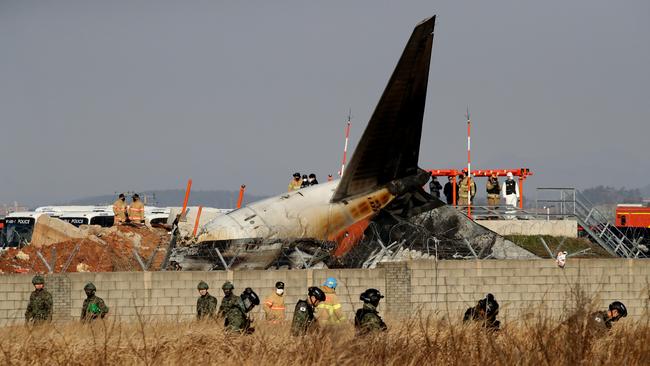
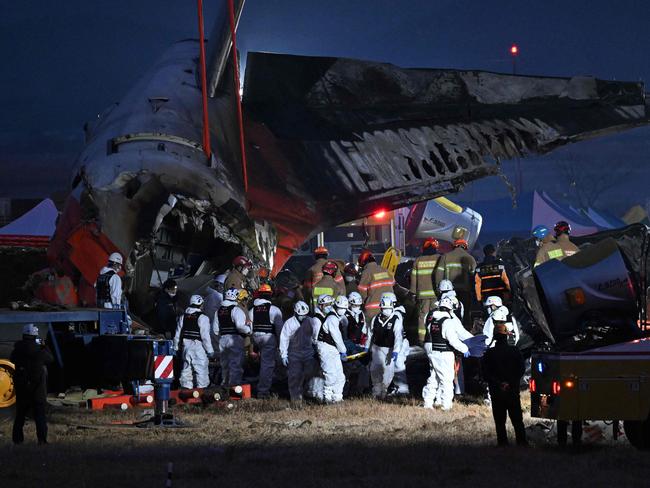
WHAT IS THE GOVERNMENT AND OFFICIAL RESPONSE?
The accident occurred with South Korea in the throes of a political crisis, with its third president in a month.
Acting President Choi Sang-mok, on his third day in office, convened an emergency meeting with cabinet members and visited the crash scene at Muan.
Jeju Air said it “sincerely” apologised - with top officials shown bowing deeply at a press conference in Seoul - and vowed to do all it could to help.
Boeing said in a statement that it was in touch with Jeju Air and stood “ready to support them”.
The country declared a seven day national mourning period effective from Sunday, with memorial altars to be set up nationwide.
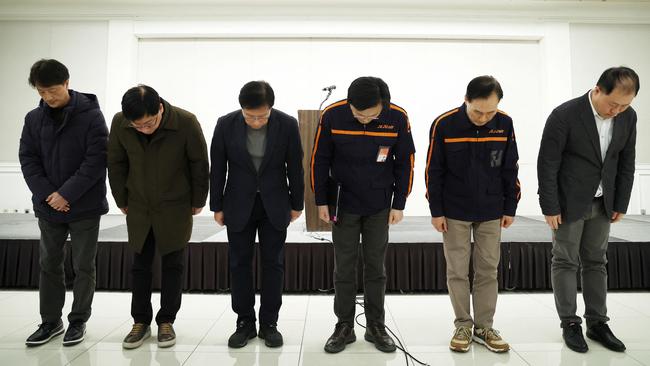
SOUTH KOREA’S SAFETY RECORD
South Korea’s aviation industry has a solid safety record and the crash was the first fatal accident for Jeju Air.
A Jeju Air-operated Bombardier Q400 carrying 74 passengers veered off the runway due to strong winds at another southern airport, Busan-Gimhae on August 12, 2007. A dozen people were injured.
Before Sunday’s crash, the deadliest such incident on South Korean soil dated to April 15, 2002.
An Air China Boeing 767 plane travelling from Beijing hit a hill near Busan-Gimhae airport, resulting in 129 deaths.
The most recent fatal crash of a South Korean airline happened at San Francisco airport on July 6, 2013. Asiana Airlines’ Boeing 777 aircraft missed its landing, leaving three dead and 182 hurt.
The deadliest disaster to hit a South Korean airline goes back more than four decades — when a Soviet fighter jet shot down a Boeing 747 above the Sea of Japan.
Twenty-three crew and 246 passengers aboard the Korean Air flight were killed in the September 1, 1983 disaster, as they were travelling from New York to Seoul via Alaska.





